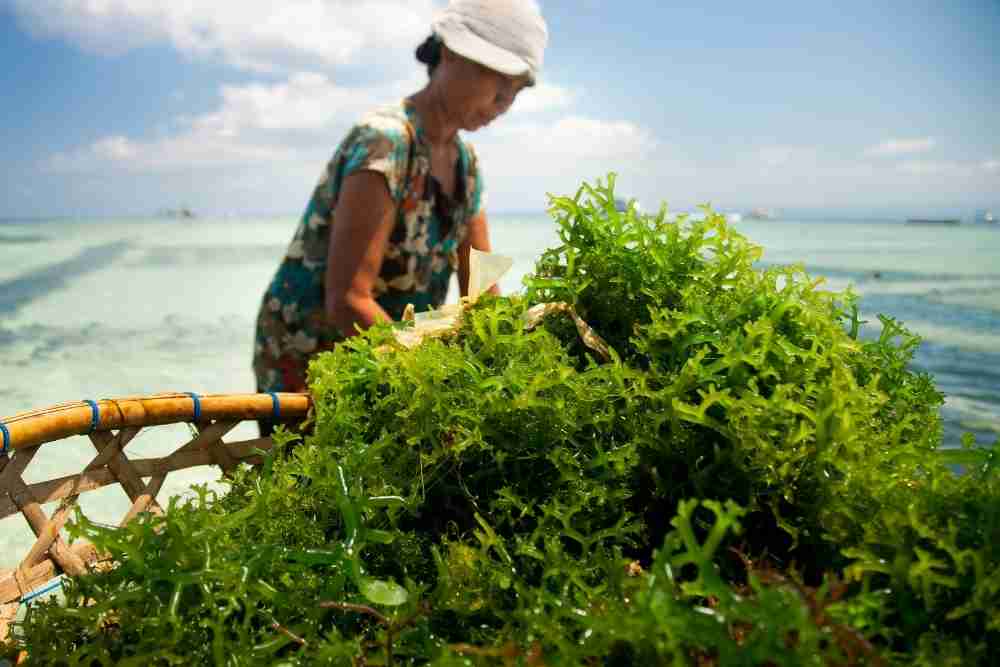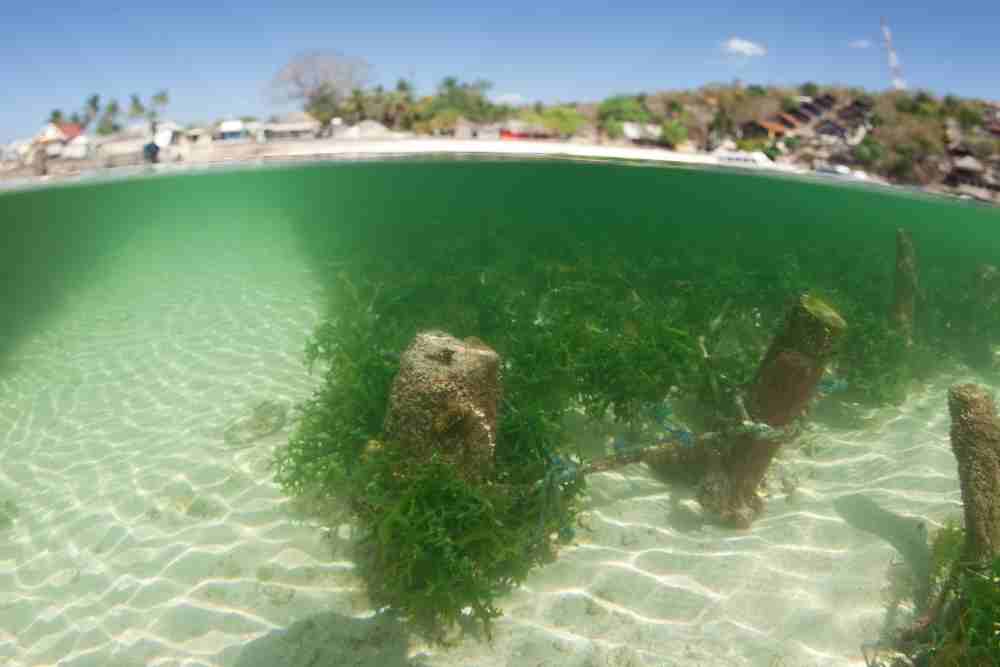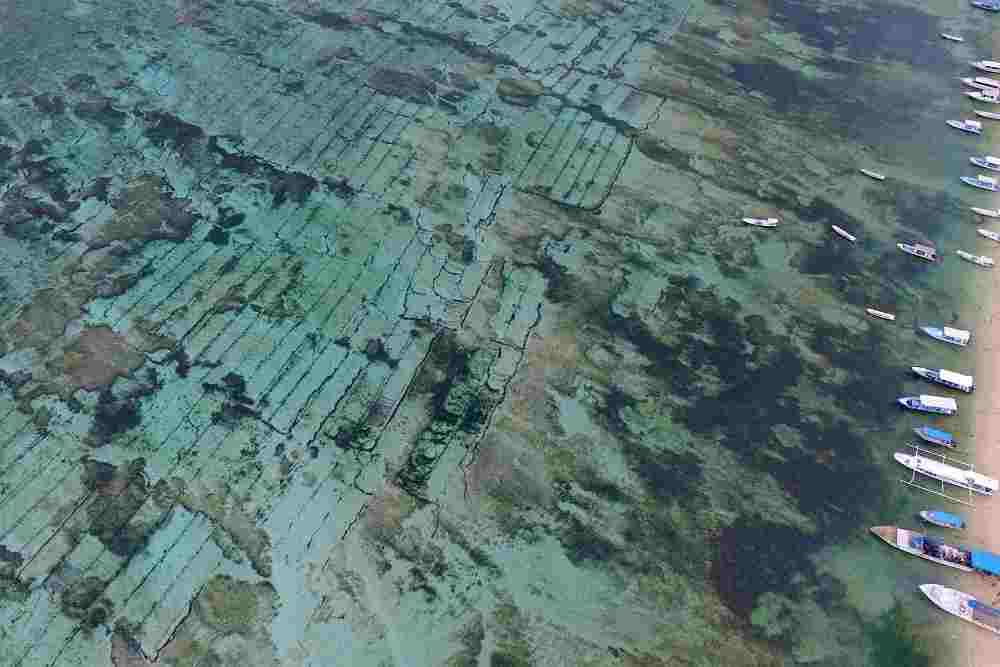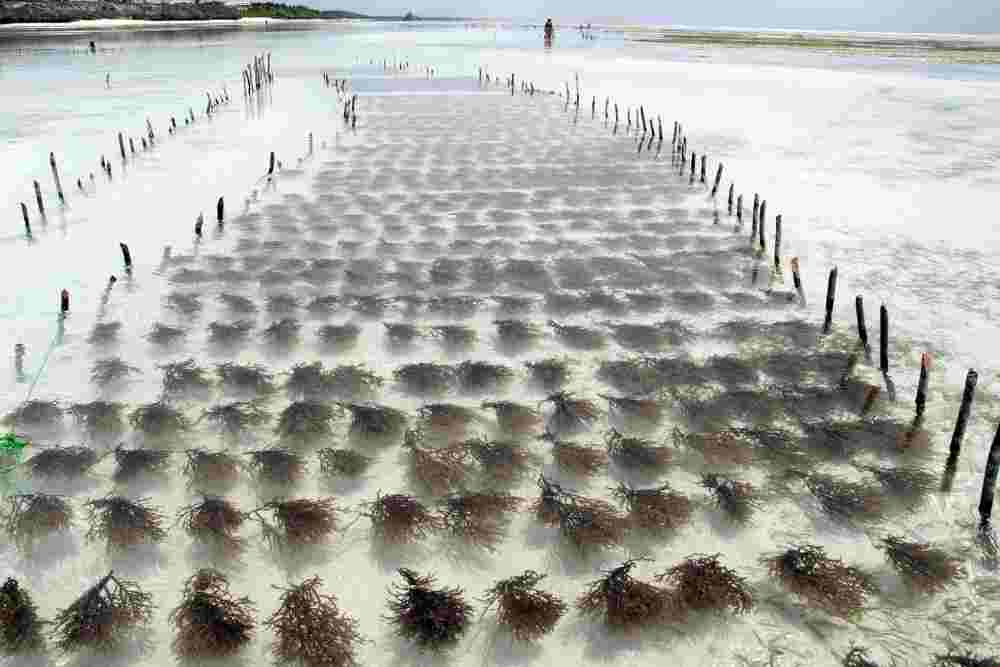Seaweeds contain high-quality proteins seaweeds have long been recognized as a healthy food source. Seaweeds are nutrient-rich with an abundance of vitamins, minerals, enzymes, and trace elements.
The article described the benefits and limitations of seaweed farming worldwide.

What is Seaweed
Seaweed is a type of algae that is typically found in saltwater. there are three main types of seaweed: red, green, and brown.
Seaweed can be eaten fresh or dried, and it is often used in food dishes or as a dietary supplement.
Seaweed is a type of algae that grows in the ocean. There are many different types of seaweed. Some types of seaweed are used for food, others for industrial purposes, and still others for scientific research.
Seaweed can be used as a source of food, fertilizer, animal feed, biofuel, and pharmaceuticals.
History of Seaweed Farming
Seaweed farming has a long history, with evidence of seaweed cultivation dating back to ancient times. In China, Japan, and Korea, seaweed has been farmed for centuries as a food source and for use in traditional medicine.
In these countries, seaweed farming was traditionally done using the method of “tangled line culture,” where seaweed is grown on lines suspended in the ocean.
In Europe, seaweed farming began in the 19th century, primarily in Ireland and France. The main species farmed were kelp, which was used as a source of alginate, a thickening agent used in food and other products.
In the 20th century, seaweed farming began to expand to other countries, including the United States, Canada, and Australia.
The development of new technologies and techniques, such as the use of floating rafts and long-line systems, has made seaweed farming more efficient and cost-effective.
In recent years, seaweed farming has been gaining interest worldwide, as a sustainable alternative to traditional aquaculture, and for its potential in food, feed, cosmetics, and bioplastics industry.
Many countries are investing in research and development to improve the efficiency and scalability of seaweed farming, and to identify new species and uses for seaweed.
Benefits of Seaweed Farming

In Asia, the use of seaweed for food and fertilizer is a centuries-old tradition. Now, this valuable resource is being recognized in North America as a potential cash crop with many benefits.
Major benefits of seaweed farming are,
1. Environmental Friendly Production
Farming seaweed also has environmental benefits. Seaweed cultivation can help to rehabilitate degraded marine ecosystems and provide habitats for fish and other aquatic life.
Seaweed farming can also help to reduce coastal erosion by stabilizing the seabed.
Seaweed farming also helps to improve water quality and reduce coastal erosion.
2. Sustainable Form of Agriculture
Seaweed farming is a more sustainable form of agriculture. Seaweeds consume less nutrients than land plants, meaning that they can be grown in areas where traditional crops would not be able to thrive.
Additionally, seaweeds sequester carbon from the atmosphere, making them a carbon-negative crop.
Seaweed farming is a more sustainable way to produce food. Seaweed farming does not require the use of pesticides or fertilizers, and it uses less water than traditional agriculture.
Seaweed farming is a relatively low-impact form of agriculture.
3. Economic Benefits
Seaweed farming can generate jobs and income for coastal communities, particularly in developing countries where other economic opportunities may be limited.
Seaweed can be farmed in a variety of ways, making it a versatile crop that can be grown in many different climates.
Seaweed cultivation can be done in a wide range of climates and water conditions, making it suitable for many coastal areas around the world.
4. Food Security
Seaweed is a nutritious and healthy food source that can help to improve food security in areas where traditional food sources are scarce.
Seaweed is a high-value crop that can be sold for a profit in the local and international markets.
Seaweed is a high-value crop that can be sold at a premium price compared to other types of seafood.
Seaweed has many health benefits, including being high in antioxidants, fiber, vitamins, and minerals. it is also low in calories and carbohydrates.
Seaweed has long been recognized as a healthy food source by the public because they contain high-quality proteins (30%–35%), carbohydrates (20%–25%) dietary fiber (40%), as well as minerals (calcium, iron, and iodine) seaweeds also contain vitamins A, B12, and C.
5. Bioremediation
Seaweed can be used to clean up and remove pollutants such as heavy metals and excess nutrients from the water, making it a valuable tool in coastal water management.
6. Bioplastics and biofuels
Seaweed can be processed into various products such as bioplastics and biofuels, reducing the dependence on fossil fuels.
Increasing seaweed aquaculture production may open the door for a more efficient form of renewable energy: biomass.
7. Climate Change Adaptation
Seaweed farming can be adapted to changing conditions and rising sea levels as they can be grown in the intertidal zone and can tolerate a wide range of water temperatures and salinity levels.
Disadvantages of Seaweed Farming

Despite the many advantages of seaweed farming, there are also a few disadvantages to this form of agriculture.
1. Lack of Enough Professional Personals
One disadvantage is that it can be difficult to get started in seaweed farming. Farmers may face challenges as the industry grows or changes over time.
Seaweed farming is still relatively new and there is some uncertainty about how this industry will develop in the future.
2. Expensive
Equipment and infrastructure are expensive, and many farmers must lease or purchase their own land in order to get started.
3. Time Consuming System
Seaweed farms also require a lot of maintenance, which can be difficult and time-consuming.
The plants need to be monitored regularly and harvested at the right time, or they will not be productive.
4. Disease Risks
There is also the risk of disease or pests affecting the seaweed crop, which can cause significant losses for the farmer.
Seaweed Farming Technology

There are several types of seaweed farming, each with their own advantages and disadvantages. Some of the most common types include:
Suspended culture
This method involves growing seaweed on lines or ropes suspended in the ocean. This is the most traditional method of seaweed farming and is still widely used today.
Rope Culture | Long-line culture
This method involves growing seaweed on long lines anchored to the ocean floor. This method allows for the cultivation of larger seaweed species, such as kelp, and is commonly used in Europe and North America.
In rope culture, the seaweed is grown on ropes that are suspended in the water.
The most popular farming techniques involve either using nets or ropes to suspend seaweed in the water or using long strips of land to grow the seaweed in a tidal pool.
In both cases, the seaweed must be regularly harvested and monitored for pests and diseases.
The advantage of rope culture is that it can be done in a variety of water depths and locations.
The disadvantage is that it can be more susceptible to damage from storms and high winds.
Floating raft culture
This method involves growing seaweed on floating rafts that are anchored to the ocean floor. This method allows for the cultivation of smaller seaweed species, such as nori and dulse, and is commonly used in Asia.
In this culture system, the seaweed is grown in baskets or bags that are placed on the surface of the water.
One of the benefits of floating seaweed farming is that it can be done in both fresh and saltwater, which makes it a versatile crop.
In addition, seaweed cultivation can help reduce coastal erosion by stabilizing sand dunes and providing a habitat for marine life.
Bottom culture
This method involves growing seaweed on the ocean floor, using techniques such as tiling or matting. This method is commonly used for the cultivation of seaweed species that require a hard substrate for attachment.
Integrated multi-trophic aquaculture (IMTA)
This method involves growing seaweed in combination with other aquatic organisms, such as fish or shellfish, in a single system. This method can help to increase the efficiency and sustainability of aquaculture systems.
Offshore Seaweed Farming
This method is used to farm seaweed in the ocean and it is still in the research phase and experimentation.
Seaweed Farming & Climate Change

As the world warms, seaweed farming could provide a way to take carbon dioxide out of the atmosphere and mitigate the effects of climate change.
Seaweed is a fast-growing algae that can be farmed in coastal areas and used to make food, biofuels, and other products.
A new study finds that seaweed farming could sequester more than 1 billion metric tons of carbon dioxide equivalent by 2050, which would help reduce global temperatures by up to 0.23 degrees Celsius.
As the Earth’s climate changes, seaweed farming may provide a new way to battle rising oceans and extreme weather.
Seaweed is a versatile crop that can be farmed in both salt and fresh water, making it an ideal crop for coastal communities looking to adapt to changing sea levels and increasingly extreme weather conditions.
While seaweed farming is not a new practice, it has seen renewed interest in light of climate change concerns.
In addition, seaweed cultivation can help improve water quality by removing pollutants from the water. Seaweed also helps protect coastlines from erosion by serving as a natural buffer against waves and storms.